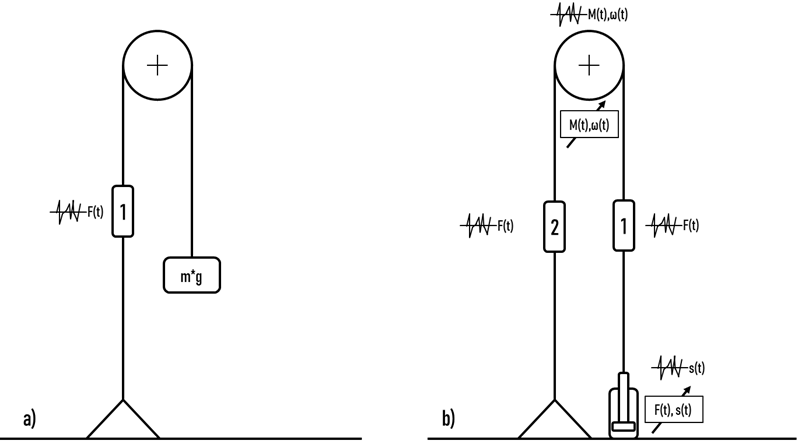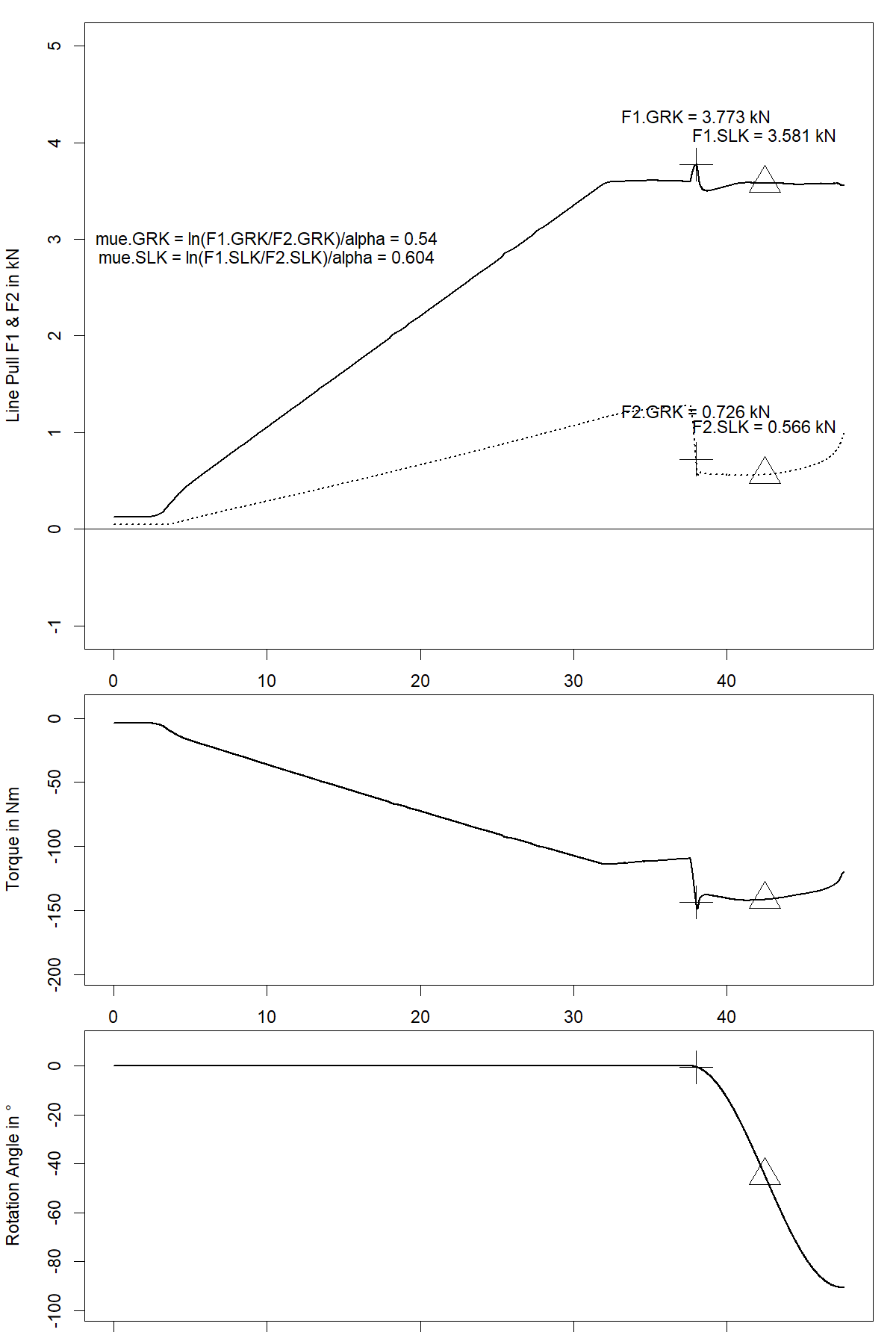Regarding the measurement of the Coefficient of Friction (COF) of ropes and belts on sheaves standards often remain unspecific (e.g. DIN EN 81-20:2020 Chapter 5.5.3). COF assessment is often described only on a system level (e.g. DIN EN 81-20:2020 Chapter 6.3.3) in terms of preventing specific malfunction events. In contrast to this corresponding tests at system level involve a great deal of effort. Therefore, it is often tend to assess COF by simple test designs (Fig.1a) accepting the limited informative value of such tests. Of course, COF is always a systems value, depending on line pull (pressure distribution in contact area), materials combination, wear status of the contact partners, dynamical parameters and so on. Hence, it becomes obvious that there is no such thing as a single characteristic COF. Taking all the mentioned into account, TU Chemnitz, Professorship of Materials Handling and Conveying Engineering developed a more sophisticated test setup for COF assessment (Fig. 1b). By using a multi-axial test stand it becomes possible to simulate more complex time-load-regimes. All forces on the respective ropes/belts and moments on the sheave are measured and controlled. Therefore, a detailed evaluation of the contact with a minor test effort becomes possible.

Figure 1: conventional test setup 1a) and further developed test setup at TU Chemnitz 1b)
The test setup shown in Fig. 1b allows the line pull F1 to be applied at a desired load rate (Fig. 2). The line pull is then kept constant for a specific time interval. This makes it possible to determine a static coefficient of adhesion (comparable to the value determined in the test setup shown in Fig. 1a). A rotational movement of the sheave is then carried out, which enables the determination of a coefficient of friction at the moment of breaking loose (mue.GRK). In addition, the coefficient of friction during the sheave movement can also be determined (mue.SLK). The test setup has already been successfully used as part of a product certification process.

Figure 2: Measured forces (line pull) F1 and F2 as well as momentum and rotational displacement of the sheave
Christoph Müller (TUC-FTM)